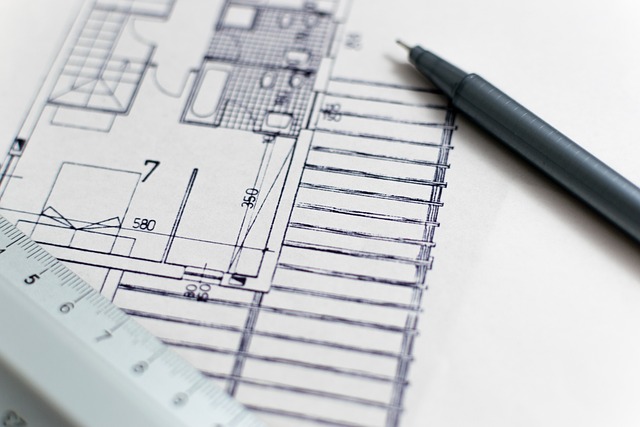Precision underground mapping, combining GPS, RFID, and GPR technologies, has revolutionized utility line location. This method generates detailed 3D maps, enhancing safety and efficiency in excavation projects for utility companies. Advanced techniques like GPR and electromagnetic location methods avoid damage risks, improve project planning, speed up timelines, reduce costs, and minimize disruptions, making it a game-changer for construction. Traditional methods like manual digging are error-prone, time-consuming, and hazardous; advanced technologies offer quicker, accurate solutions through precision underground mapping data. Strategic implementation involves integrating GPS, satellite imagery, and existing maps, with LiDAR scanners enhancing 3D model accuracy. Regular updates ensure data accuracy over time.
In today’s digital era, precise utility line locating is crucial for efficient construction projects. This article explores the transformative power of precision underground mapping, a game-changer in the industry. We delve into the technology behind this innovative approach, its manifold benefits, and how it overcomes traditional challenges. Furthermore, we provide best practices for implementing advanced mapping techniques, ensuring unmatched accuracy and streamlining construction processes.
Understanding Precision Underground Mapping: The Technology Behind It
Precision underground mapping is a cutting-edge technology that has revolutionized the way we locate utility lines. This advanced method employs a myriad of sensors and data collection techniques to create detailed 3D maps of underground infrastructure. By integrating GPS, radio frequency identification (RFID), and ground-penetrating radar (GPR) technologies, professionals can accurately identify and map pipes, cables, and other utilities buried beneath the surface.
The technology behind precision underground mapping offers unparalleled accuracy and efficiency compared to traditional methods. GPR, for instance, sends electromagnetic waves into the ground, which bounce back after hitting different materials, creating a detailed image of what lies below. This data is then processed and combined with GPS coordinates to generate precise maps that help workers avoid damage during excavation projects. By leveraging these innovative tools, utility companies can enhance safety, reduce costs, and streamline their operations.
Benefits of Accurate Utility Line Locating for Construction Projects
Accurate utility line locating is a game-changer for construction projects, offering numerous advantages that enhance efficiency and safety. With precision underground mapping techniques, construction teams can precisely identify and map out vital utility lines before any excavation or building work commences. This process significantly reduces the risk of damage to critical infrastructure such as water, gas, and electrical lines, which can lead to costly delays and safety hazards.
By employing advanced technologies like ground-penetrating radar (GPR) and electromagnetic location methods, construction professionals gain a clear understanding of the underground utility network. This real-time data enables them to plan projects with greater accuracy, avoiding potential conflicts and ensuring that vital services remain undisturbed. The benefits extend beyond risk mitigation; efficient utility line locating speeds up project timelines, reduces labor costs, and minimizes disruptions to nearby communities and businesses.
Common Challenges in Traditional Methods and Their Solutions
The traditional methods of locating utility lines, such as manual digging and visual inspection, often come with significant challenges. One of the primary issues is precision underground mapping. Without advanced tools, it’s easy for workers to dig in the wrong areas, causing damage to existing infrastructure and increasing the risk of accidents. This not only leads to costly delays but also poses safety hazards for construction crews.
Moreover, traditional techniques are time-consuming and inefficient. They require extensive manual labor, which can be slow and prone to errors. In today’s fast-paced construction industry, this inefficiency can translate into project delays and higher costs. Advanced technologies, such as ground-penetrating radar (GPR) and remote sensing, offer a way out by providing accurate precision underground mapping data quickly and safely. These tools enable crews to identify utility lines before excavation, minimizing damage and ensuring efficient project completion.
Best Practices for Implementing Advanced Mapping Techniques
Implementing advanced mapping techniques requires a strategic approach and adherence to best practices for optimal results in precision underground mapping. Firstly, integrating diverse data sources is key. Combining GPS data, satellite imagery, and existing utility maps creates a comprehensive digital foundation. This integrated platform enables accurate location verification and detailed visualization of the underground infrastructure.
Secondly, utilizing cutting-edge technology like LiDAR (Light Detection and Ranging) scanners enhances mapping precision. These scanners emit laser pulses to measure distances, generating highly precise 3D models of the terrain and utility lines beneath the surface. Regularly updating this data ensures accuracy over time, as changes in infrastructure are captured promptly.
Precision underground mapping has transformed the way we locate utility lines, offering unprecedented accuracy and efficiency. By leveraging advanced technologies like ground-penetrating radar and LiDAR, construction projects can now avoid costly damage and disruptions caused by traditional methods. This innovative approach not only enhances safety but also streamlines project timelines and budgets. Adopting best practices, such as combining multiple data sources and regular updates, ensures that utility line locating remains a reliable and game-changing solution for the construction industry.
